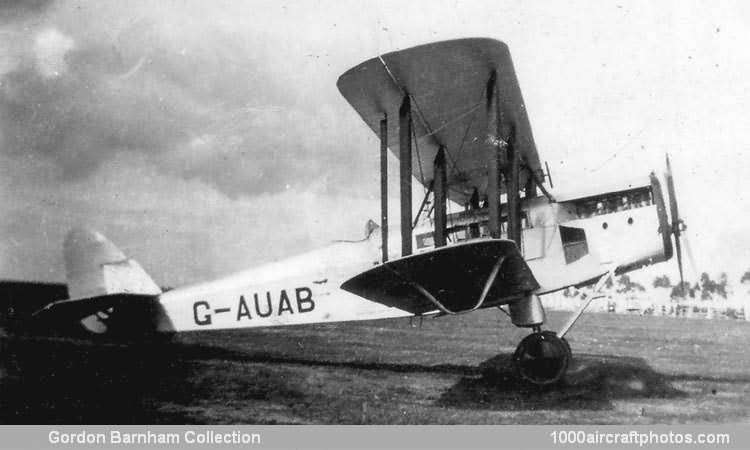The second prototype, G-EBFO, was very much in the public eye with a number of epic long-distance flights by Cobham. As a result of being exhibited at the Prague Aero Exhibition in May 1924, seven D.H.50s were built under license by Aero in 1926; these were operated by the Czech airline CLS. The second prototype was then delivered to Imperial Airways for a series of survey flights, commencing with a 9,000 mls (14,480 km) flight to Rangoon with Sir Sefton Brancker. On return, following a minor accident, the Puma engine was replaced by a 385 hp Armstrong Siddeley Jaguar III radial, and during repairs preparations were made for the next long-distance flight by fitting additional fuel tanks. With these modifications the aircraft was redesignated D.H.50J.
This survey flight was from London to Cape Town, flown by Alan Cobham with A.B. Elliot as engineer and B.W.G. Emmett as photographer. The flight was sponsored by Lord Wakefield, departing on November 16, 1925, and returning the following March 13. Plans were immediately made for the third flight in the series, this time to Australia. Because much of the route was over water, floats were fitted by Short Bros. at Rochester and the aircraft took off from the Medway on June 30, 1926. The 28,000 mls (45,060 km) round trip to Melbourne was only marred by the unfortunate death of Elliot, who was shot by a stray bullet while flying over the deserts of Iraq.
Following the return on October 1, 1926, when Cobham landed on the River Thames by the Houses of Parliament, he received a knighthood from His Majesty, King George V. Imperial Airways subsequently opened up the surveyed routes with larger aircraft and G-EBFO was sold in Australia, although two further D.H.50s were used on other routes. Another two were registered in Britain, but most of the remainder of the Stag Lane production were sold in Australia, a total of nine being delivered. One also joined the RNZAF for photographic survey duties, until it also went to Australia. Including the two prototypes, a total of seventeen D.H.50s were produced.
Built in 1924, the pictured aircraft was shipped to Australia, where it was registered to the Civil Aviation Board (CAB) as G-AUAB on July 31, 1924, by August 31, 1929, it had been reregistered VH-UAB. On May 7, 1931, it was struck off the civil register, and transferred to the RAAF under serial A10-1. On May 11, 1932, it was returned to the CAB and again registered VH-UAB. The next day it was sold and had several subsequent owners, including Sir Charles Kingsford Smith and O.B. Hall (March 22, 1933) who named it Southern Cross Midget. On May 26, 1943 it was impressed into the RAAF, again as A10-1.
So successful was the D.H.50 in commercial service with Qantas that four D.H.50As, with slightly longer cabins and other minor changes, and three D.H.50Js were built by the airline, and others by West Australian Airways (3) and Larkin Aircraft Supply (1). Qantas used the aircraft to link the inland railheads in eastern Australia. Another aircraft was modified to carry a stretcher, doctor and nurse, to inaugurate the famous Flying Doctor Service in August 1927, and continued in service until replaced by a Fox Moth in 1934. In addition to commercial use other D.H.50s were operated by the RAAF for communications and survey flights.
Three other D.H.50As were license-built by SABCA at Brussels in 1925 for use by SABENA in the Belgian Congo between 1925 and 1928, but their ultimate fate is unknown."
